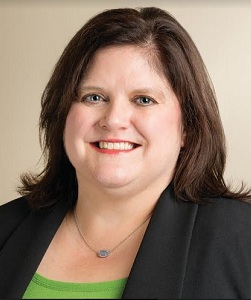For every hospital, large or small, a skilled staff is perhaps the most valuable asset – even in more normal times. There is no question that hospitals face increasing costs and tighter margins every year, regardless of a global pandemic. This year is no exception, bringing with it a unique set of staffing challenges.
In the wake of the COVID-19 pandemic, high turnover rates and an increased number of hospital staff leaving in search of higher pay have plagued hospitals nationwide. In an effort to keep valuable employees, hospital executives have taken drastic measures, such as offering larger bonuses and hazard pay. To compensate for staffing shortages, more hospitals have turned to hiring contract workers or filled gaps with new graduates who are required to work with a preceptor during their first few months on the job.
With so many variables at play, it’s more important than ever for hospitals to proactively track and manage staffing levels to maximize productivity. The Community Hospital Corporation team has identified several best practices for implementing a new productivity program or enhancing productivity practices already in place at community hospitals.
Five Productivity Best Practices for Community Hospitals
Keep patient care front and center. With all productivity initiatives, it’s important to emphasize that patient care comes first. Many times, the most efficient care is also best for the patient. For example, including overlapping shift-change transition and communication time in the schedule helps staff transition care safely and efficiently without incurring overtime.
Gain consensus with communication. Because staffing more efficiently may result in fewer staff members per shift, it’s vital that department managers are committed to the initiative so they can properly educate and motivate staff. When managers understand that monitoring productivity allows the hospital to staff appropriately based on patient volumes. They can help staff members understand that the hospital must carefully manage resources to support the hospital’s mission, prevent future layoffs and remain sustainable for the future.
Track and review on a timely basis. Departments and hospitals with the most efficient staffing monitor data the most frequently. Some of the best success stories at CHC hospitals involve implementing data checking at shift change and making corrections in real time. These hospitals have made great improvements, and the process has also helped bolster team morale. That’s because the staff sees their individual contribution to improving the hospital. At a minimum, monitoring key statistics such as orientation and education time, overtime and contract labor percentage on a bi-weekly basis allows for relatively quick corrections to any emerging issues.
Double check data. Because productivity reports are only as good as the information they analyze, it’s vital to ensure data integrity. For example, managers must ensure employees clock into the correct department, especially if they float from one department to another. Another key data point to check is patient volume, which must be entered daily and monitored for accuracy by managers.
Take advantage of Web-based software. A unified, all-in-one electronic platform is the best way to handle the evolving staffing challenges community hospitals face today. Labor management software can help with enterprise-level planning, hiring and scheduling, as well as labor functionality—all on a single dashboard. With such a platform in place, care providers and administrators alike have access to a bird’s eye view of their operations, so they have a better idea of how their most valuable resource, their personnel, is being allocated.
Productivity tools also give workforce managers greater visibility into what’s going on throughout the facility and the flexibility to adjust staffing levels to meet changing needs in real-time. Features such as productivity snapshots help executives compare daily staffing to census levels and use different units of service throughout a hospital.
With this kind of data available, schedules and shift changes can be communicated to staff members well in advance. There are also more strategic impacts on workforce performance. By providing staff with more advance notice about schedules and shift changes, hospitals can build more trust and promote higher engagement, satisfaction, and retention.
Looking ahead to the future
Although a productivity tool cannot solve all staffing challenges overnight, it holds promise for making key improvements that will have a long-lasting effect. As we look ahead to what the future holds for community hospitals, one thing remains clear: Hospital staff and administrators will have to remain flexible and be open to new technologies as the healthcare landscape continues to shift and evolve. Amid these challenging times, it’s more important than ever to take advantage of helpful technology to increase staff productivity while never losing sight of the ultimate goal – providing excellent patient care.
To learn more, read about CHC Productivity Services https://communityhospitalcorp.com/services/financial-improvement/productivity-management/




















